In all cases, copy is a direct conversation with the consumer. This may be to inform, educate, entertain or simply ask. Writing copy that converts is no different but requires a particular style and some fundamental components to get people acting. Whether you want your readers to subscribe to an online service or buy a product; the way in which you communicate with them carries considerable weight.

Image Source: LinkedIn
The relentless proliferation of content today has forced marketers to find new ways of grabbing the audience’s attention. Direct response copywriting focuses communication directly to the customer in a bid to compel them to take action in the immediate moment.
Long before the internet became so saturated with content, highly ambitious direct response copywriters churned mass interest in their products and converted thousands and thousands. The 1950s and ’60s made David Ogilvy a highly demanded copywriter amongst big brands. His legacy as the ‘father of modern advertising’ came after the success of his Rolls-Royce ad, headline reading: “At 60 miles an hour the loudest noise in this new Rolls-Royce comes from the clock”.
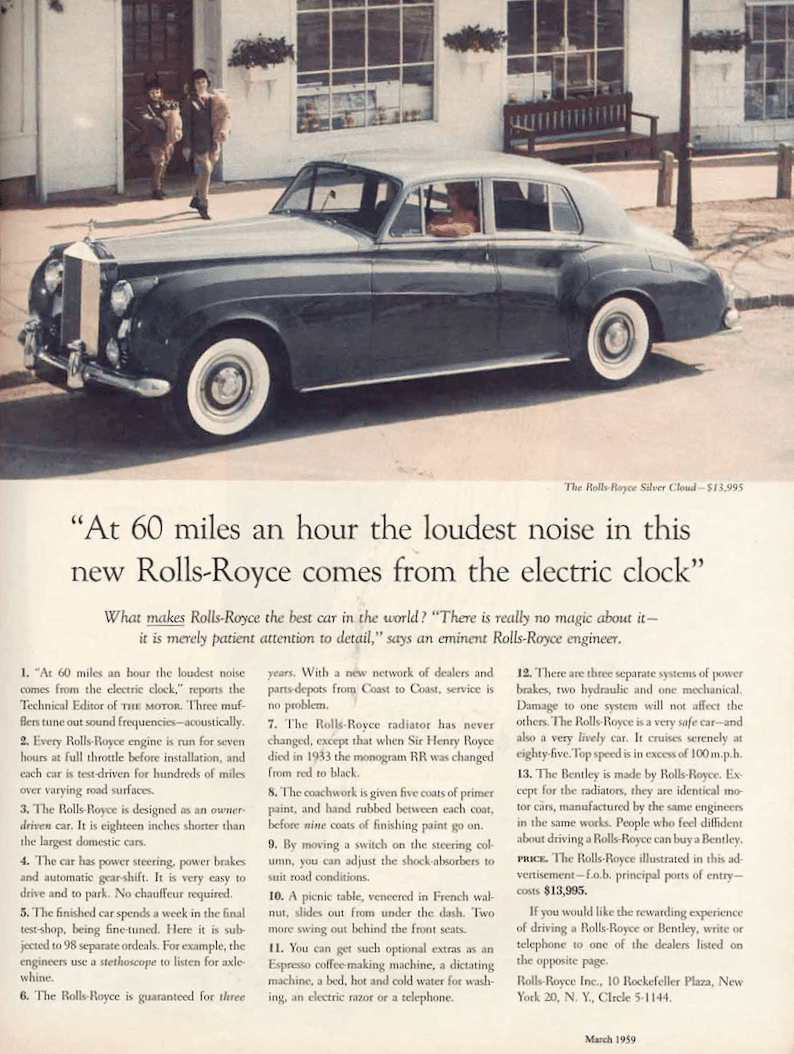
Image Source: CrazyEgg
Ogilvy explained that the most effective direct response copy doesn’t just talk to your targets- it speaks to them on a personal level. He reminds us that people are most likely to be alone when they read your copy and to address them each individually.
The combination of deeply understanding customers with a direct and personalised approach is the structure on which the form of copywriting to convert is built.
Successful direct response copywriting will craft the perfect balance of information that tugs at readers emotions and addresses their needs. Once achieved, readers should have no reason not to act immediately by converting from an interested person with a problem to a loyal customer with a solution.
There’s little need to reiterate the point that copywriting is effectively salesmanship in print. The only difference now is that the traditional door to door salesman can take advantage of a grander scale of prospective customers thanks to the internet.
With that said, there are a few ways to optimise the writing process and the copy itself for maximum conversions.
1. Own The Solution
In essence, writing copy that converts naturally means that you already own a particular solution to your target markets problem. Owning the solution is only as useful as your prospects say so. Some have only just discovered they have a problem, others might not even know it yet.
As for your solution, some people might be sold on it already, whilst others require more information and evidence of why your solution is the best. The best form of content in this case, is that which exacerbates their anxieties and presents a clear and coherent case that supports their decision to convert.
So, for example, you need more people to convert to paying subscribers for highly effective educational study material. It’s a great opportunity to produce and sell succinct information that is readily available. The production costs are low, and the returns are high. The question of what’s in it for the supplier is obvious. But, who is likely to be interested in it? More importantly, why would they be interested in it?
The first thing to do is to understand your prospective customers and identify what they need. In the case of the example above, students are the primary prospects and their needs are effectively reliable study material and are imminent.
The second thing to do is to put both their problem and your solution into words. This is a critical component of the copy. As with the student example here, even if the needs and solutions are abundantly obvious to everyone, reiterating them can do two main things.
Firstly, it shows that you empathise with your audience and demonstrates to them that you understand exactly what they need. This immediately builds trust and opens up the stage for your now much-anticipated solution.
In order to hit the nail right on the head with this one, the key is to both have a solution to a problem and to incorporate them both into the copy. The higher up the text, the better. And the sooner they accept the connection you are trying to make with them in your copy, the quicker your prospects will act to form a lasting connection with the product or service.
2. Preempt Objections
Simply having the solution isn’t enough for prospects to start throwing their money at you. Most can imagine the number of things that could go wrong between the time it takes a person to read even the most compelling piece of copy and to hit the checkout button.
In fact, based on a number of different eCommerce studies, the average abandoned cart rate is 68.8% (CampaignMonitor). There will forevermore be some last-minute objections to buying something. Some, naturally, can’t be helped. There are many reasons to eventually neglect a purchase, that could be addressed in your copy and reduce abandoned cart rates.
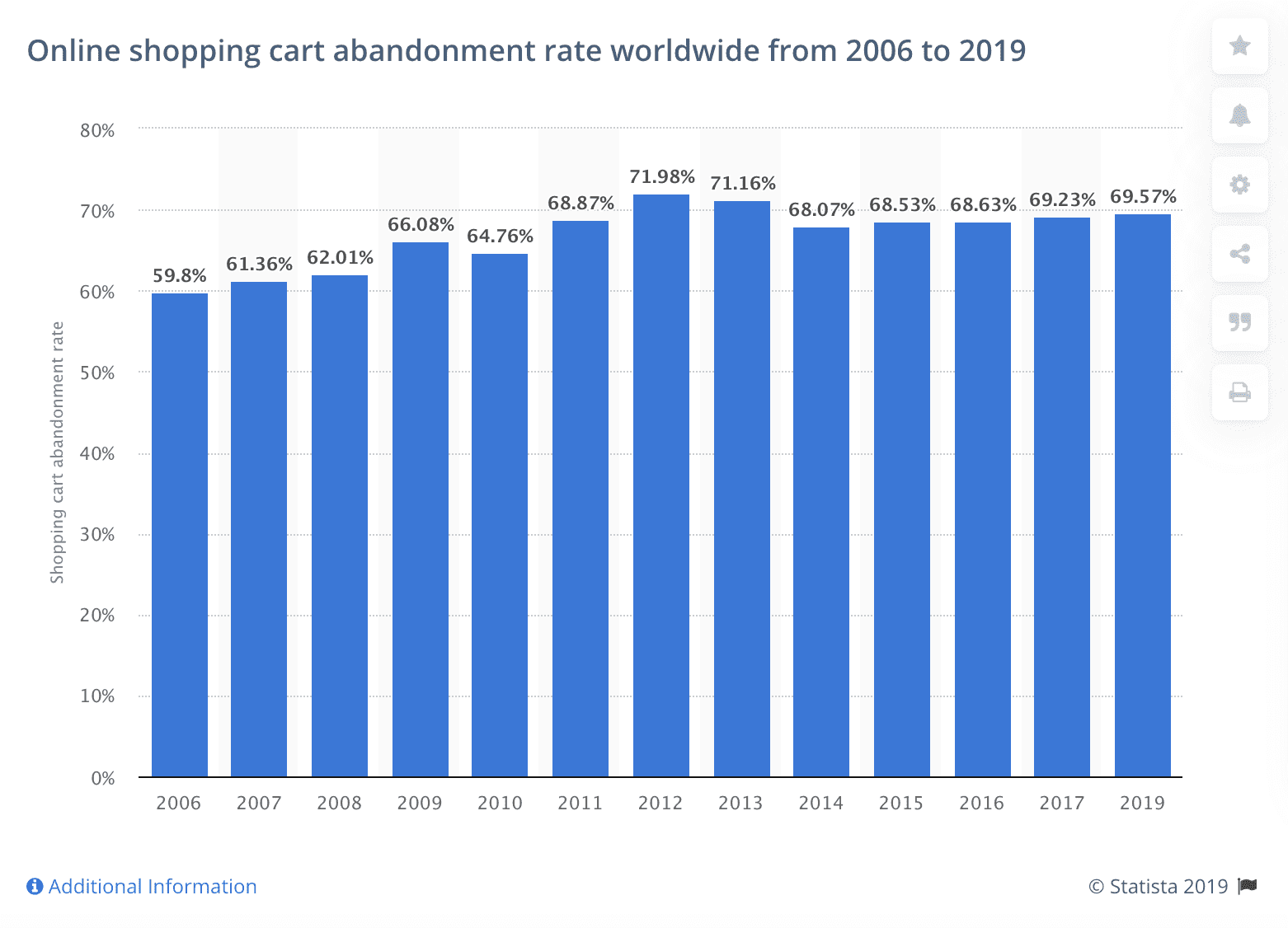
Image Source: Statista
It depends on the industry, product or service and what exactly you’re asking your prospects to do. You just have to figure them out and preempt these objections.
Often, objections to completing the purchase come at the end as a result of hidden costs, higher than expected pieced or unknown information coming to light at the checkout. An appropriate step to correcting these is to be as transparent and clear in your copy as possible.
Phrases such as “no hidden costs” and “one-off payment” can be truly influential and effective in gaining your reader’s attention. They become successful at converting only when they are true. In other words, refrain from using them if there are, in fact, additional costs and hidden information that prospects are likely to object to.
Alternatively, consider installing an abandoned cart plugin to your site that gives you all the functions you need to reduce the number of users who don’t follow through with the purchase.
3. Speak Their Language
If you haven’t already, the best way to speak the language of your audience is to gain a sound appreciation for the way they speak, read and write. Without doing so, you risk relaying the right information in the wrong way. Explore different writing strategies to articulate your audience’s language into words.
Remember direct response copywriting is a direct conversation with the consumer. A conversational tone is only possible when the reader can get a sense of what you’re saying and how you’re saying it. It’s a connection that can only be made possible when the words and tone of the copy are relatable to the consumer.
Do you anticipate your target audience to be funny, serious, academic or legal, for example? This is a good place to start but go further by spending time with people from your target market. Getting to know a sufficient number of people in a specific group for your research might prove to be challenging for several reasons. Spend time online in the places on the internet you expect them to be.
Conversation threads on Quora and Reddit will provide a genuine insight into the language, themes and topics of interest of your target audience. Discover whether they speak formally or informally and how they react to the use of emojis the in text.
If you’re lucky, they might even make a note of the challenges, problems or needs that would be sufficed with your service. Allow your copy to mirror these themes and language trends. This will evoke an instant connection and build trust with your prospects.
4. Don’t Neglect Headlines
Often the first contact a person will have with a piece of copy is with its headline. First impressions matter. A lot. If your prospect sees a headline that reflects their own thoughts, they are more likely to click. The same trend has been found with headlines that are the polar opposite of the reader’s opinion. This, however, is riskier and does little to help conversion rates and the reader is most likely attracted to reading something that is at odds with their own thoughts- and so is not clicking with purchasing in mind.
Use CoSchedule’s Headline Analyser:
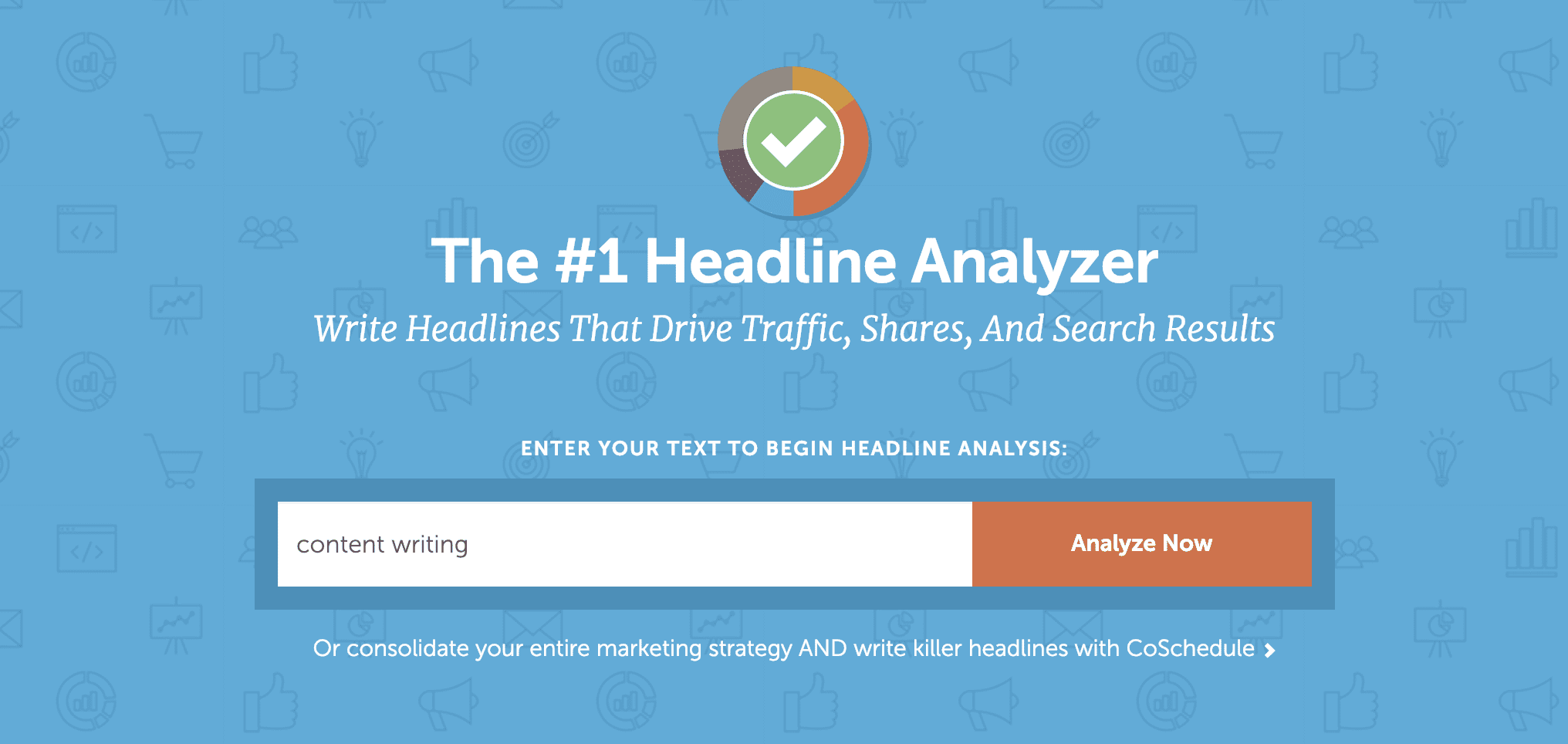
The first click is the first step towards a sale and therefore, every click matters. When it comes to crafting a headline, keep in mind that these 5 to 20 words are the most crucial. So much so that it’s been estimated that 8 out of 10 people will only read your headline and forego the rest of the copy.
Typos or a poorly structured headline? The chances of your article even being glanced at are slashed. There is no room for poor writing when the purpose of your copy is to build credible trust and demonstrate your capabilities. Take advantage of online grammar, punctuation and comma checker tools that are available.
Compelling headlines keep readers on your page for longer. To make sure you get the most out of your headline, consider announcing the problem that your service provides a solution for. This is an effective way to grab the attention of your readers. In this case, ensure that you immediately open up your copy by presenting your solution. Don’t expect your readers to work to have to find it.
If you’re struggling to think up a snappy, compelling and succinct headline, take a cue from Upworthy. Their ability to craft headlines that guarantee reader attention has seen their popularity soar. Each writer is required to write at least 25 headlines per piece of content.
Mixing around words, getting rid of words and playing with punctuation can shed light on some new ideas and great headlines that you possibly wouldn’t have thought of beforehand.
5. Use Power Words
Words have the power to convert. Hence this article. However, there are some power words that drive the conversion process faster and further. All great writers are familiar with these words and use them as and when to perform particular functions.
Each power word can be used to capture attention and provoke an emotional response. For example, some highlight pain and problems such as, ‘failure’, ‘risk’ and ‘mistake’. Some play on urgency, like ‘now’, ‘limited’ and ‘final’. Certain words can even persuade consumers that they want an exclusive product, such as ‘insider’, ‘members-only’ and ‘log in’.
So, when used effectively power words can alter the way the consumer thinks about purchasing a product or service. By manipulating the sentiment that the consumer attaches to the purchase, he or she can effectively go from thinking ‘I don’t need this’ to ‘I need this immediately’.
Ultimately, you get to decide how you want your readers to feel about your proposition. Whether that be to buy as a matter of urgency or to showcase that you understand the pain caused by a particular problem, the language you use and the power words you put to work will help you to shape the narrative.
6. Call-To-Action
Writing copy to convert has one primary function- it’s to directly and personally tell readers to take action. It should tell them what action to take and when to take it. An important feature of a CTA is that it states when a reader should take action. In some cases, an interested prospect might want to convert into a customer but will put off doing so and will often forget. By giving easy instructions that invite them to take action immediately, through the use of power words, they’re more likely to convert there and then.
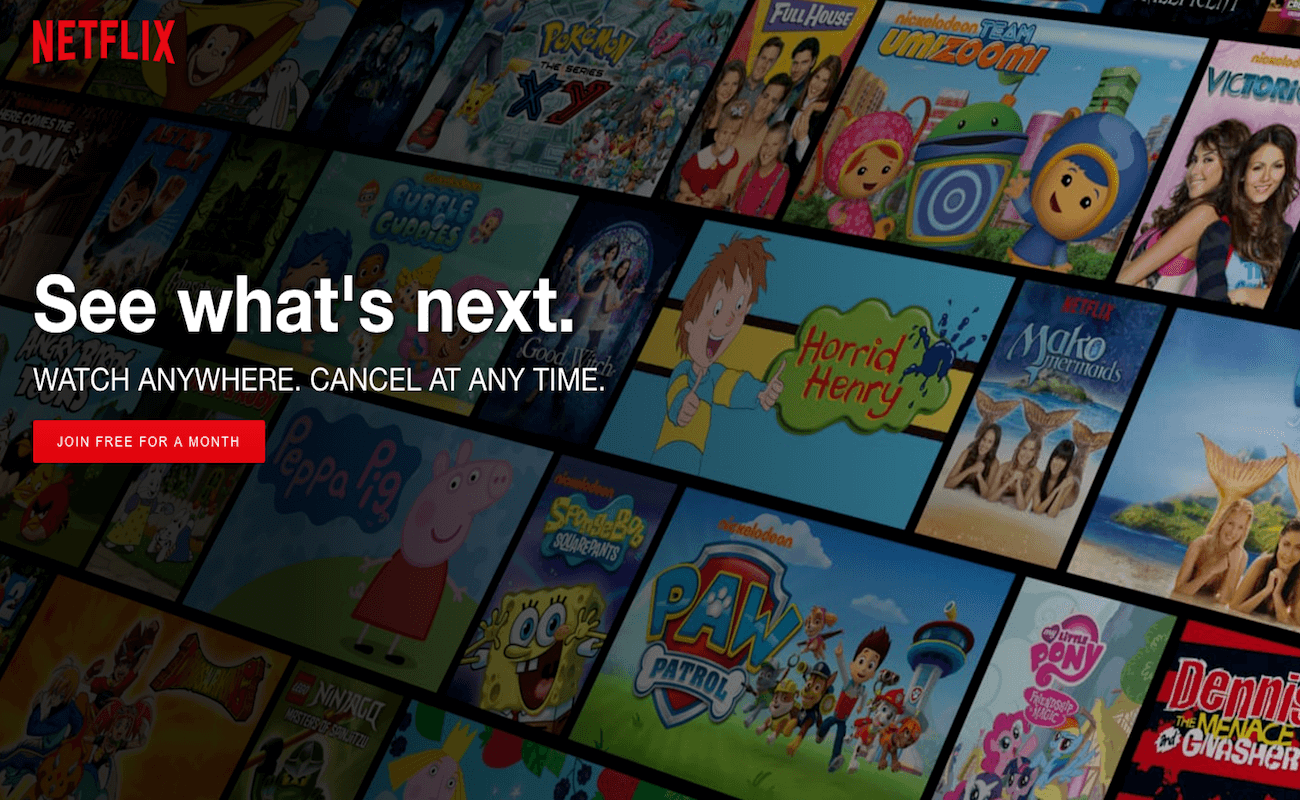
CTAs are most effective when they clearly offer a value proposition. They’re transparent when they state exactly what the customer will receive in return for their click, subscription or purchase.
The 3 C’s should always be adhered to when crafting the perfect CTA. Keep in mind they should be Concise and Compelling and written for Clarity. In other words, a short and snappy CTA that demonstrates the value in the proposition with no room for misinterpretation is likely to perform well.
As with the rest of the copy, a CTA should be tailored to the reader. Keep in mind the exact target group of people you are asking to take action. There’s no one-size-fits-all. A compelling CTA will only be effective if it appeals to a precise portion of readers. For example, if your target audience is individual students; don’t ask them to subscribe to a business premium. As soon as a reader sees something that doesn’t apply to them, the connection is broken and the prospect is lost.
In order to track the effectiveness of a specific CTA, consider using URL shorteners like Rebrandly. A URL shortener will enable you to track how different CTAs are performing and eliminate those that are ineffective.
7. Structure of Copy
As with most things in life, a logical structure will serve your conversion rates well. Just as the structuring of a press release adheres to a specific order, copy to convert has its own order of content. Keep paragraphs short to retain audience attention and remember that each point you make should provide value. An order along the following lines should be applicable to most industries.
As mentioned, the headline will feature first. It is in many ways the star of the show and determines the success of the entirety of the copy. Once it’s shining and attracting interest left, right and centre; proceed onto the next section.
Deck copy- the perfect place to add some detail and expand on the intrigue generated by your headline. This should be no more than two sentences, each providing clear points. It serves the same purpose a meta-tag gives to a blog post or an abstract to an article. It should directly reflect and simplify your headline.
Next, the lead is the place to explore larger themes and is the perfect time to delve into connecting with your audience. Relate to them by demonstrating your understanding of their needs, worries and challenges. Use this space to set up the case for your solution.
The body copy is the highest tier for your sales argument, which has its own structure. It’s finally time to showcase the value of your product or service and push those conversions.
- What’s your solution?
- What’s your promise?
- What’s your proof?
Stating these here is simply not enough and calls for the insertion of one more thing- your call to action. As per Tip No.6, follow the three C’s and clearly invite your readers to do exactly what you want them to.
Everyone appreciates a little guarantee and it could be the push some people need to convert. Demonstrate that this is an investment based on trust and expertise and offer some guarantee that puts customers at ease.
Lastly, sign off, but sign off appropriately. Consider the tone of the rest of the copy as well as your audience. Don’t sign off “Hakuna Matata” if you’re addressing a group of OAPs. But do leave a strong and lasting impression by signing off with something more creative than “yours sincerely”. Instead, opt for something more universally prompting like, “Excited to tackle [problem] with you”.
8. Leverage Social Proof
Here’s the thing; nearly 95% of shoppers read online reviews before making a purchase. It just so happens that we as collective consumers appreciate and value the opinion of others when it comes to spending money. Social proof of the value of a product or service plays an essential role in generating leads and converting them.
In fact, displaying reviews has been found to increase conversion rates by up to 270% (Spiegel). Depending on your industry, you have a choice between several sources of social proof.
- Expert social proof – recommendations from experts in the industry or quotes of those associated with your brand can bring an element of credibility to your proposal and strengthen the trust between the brand and customers.
- Celebrity endorsement – celebrities or influencers identify with your brand and transfer a large portion of their supporters to over to you.
- User social proof – include customer experiences, reviews and recommendations.
- Certification – Authority figures and industry checkpoints approve of your brand and confirms reputable services.
Tools like Proof can help:
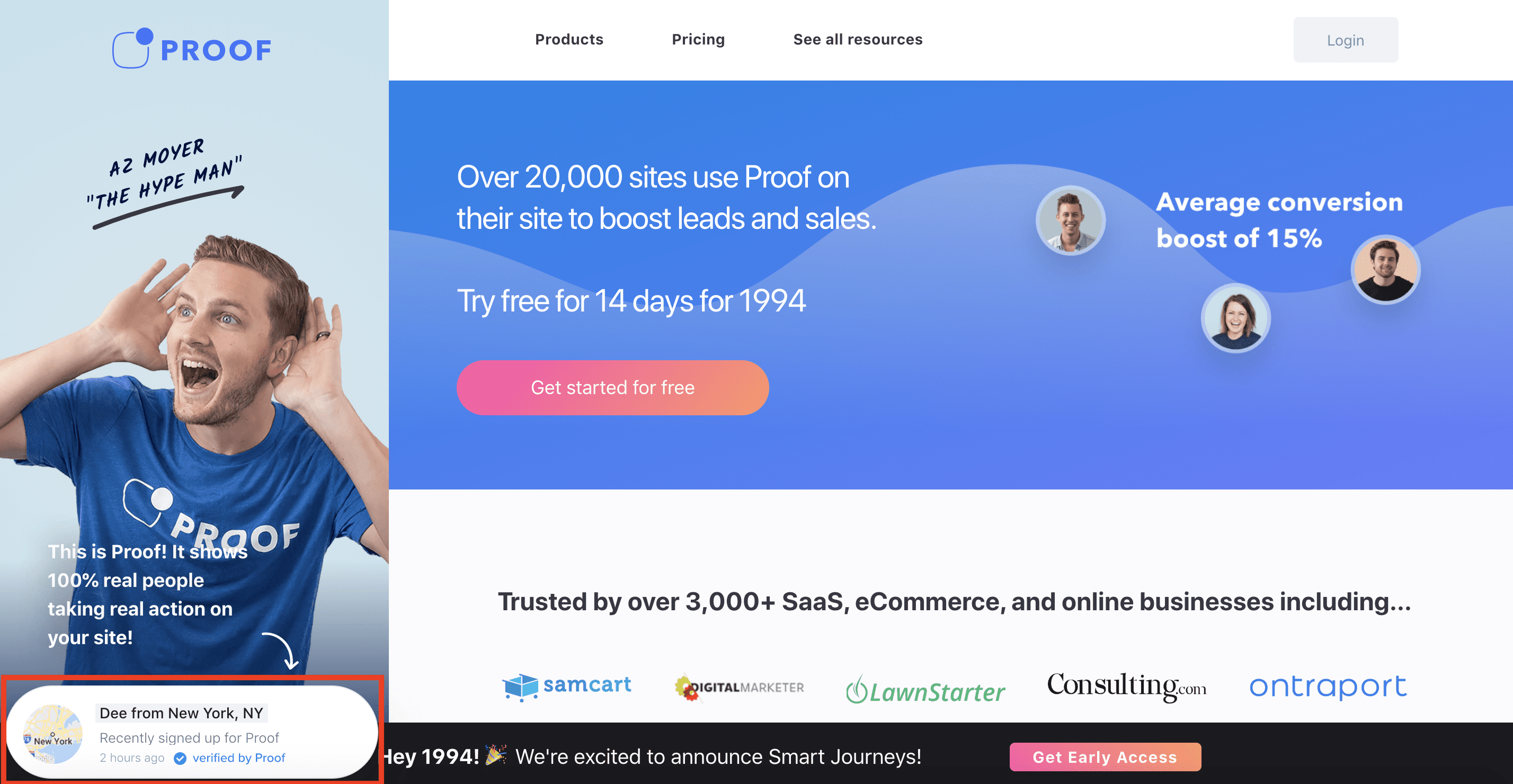
This software allows website owners to automatically display pop-ups of recent actions performed by visitors, encouraging new visitors to make an action.
External opinions remove any biased sentiment from the copy and help build trust and acceptance on behalf of the customers. It can be the push some users need to convert from an initial lead to a paying customer. Their own objections might be alleviated when they know that other users love and trust your brand.
Social proof is critical in today’s world more than ever. Despite the success rates of eCommerce over the past few years, a large portion of consumers are still wary about buying online. Social proof gives prospects the reassurance they need to overcome these anxieties
9. Test and Monitor Your Copy
The only way to determine how effective your copy is at converting prospects is to test, monitor and edit it. These processes can and should be done both during the drafting process and once the copy is complete and in circulation. Each strategy depends on how much time and money you want to invest in the testing process.
During the process of drafting headlines, quickly and effectively test variations on social media. Simply choose 3-5 of your most prominent ones and run them at Twitter updates, for example. Link them back to your page at the same time every day for a week or so and test which one generates the most clicks. Find your winner and be sure to keep improving it over time.
Once your campaign is up and running, you’ll need to keep a close eye on its performance. Key metrics like clicks, conversions and engagement will give you a better indication of what’s working. It’s also important to keep an eye on trends in how these metrics work together. For example, you may notice that your campaign is generating many clicks but few conversions. These findings will illustrate that you have a high-performing headline, but the problem rests elsewhere.
Spend less time editing the entire campaign and consider the reasons why one metric isn’t doing so well. For example, perhaps the point you link in your copy doesn’t reflect the landing page, or there are still objections that you didn’t overcome.
Consider trends for the future. It’s unlikely that this will be the last time you’ll need to use direct response copywriting to convert customers. Use this opportunity to consider the style of copy that performs well. For example, longer posts or the use of bullet points and infographics and how these features perform at different stages of the sales process. Which power-words tend to resonate more with your audience? How do these different features affect the metrics that determine the success of your campaign, such as CTR, bounce rates, purchases and abandoned carts?
Time-sensitive copy and that which can be affected by external forces should be monitored closely. For example, changes in industry legislation or new government policies and Brexit all have implications on how a person interacts across sales processes. Unforeseen changes in the external environment should be addressed across all copy- in particular, copy intended to drive conversions. In these cases, more information and additional guarantees can help to restore consumer confidence and help to boost conversions.
Once you come to grips with what works and what doesn’t, writing copy that converts in the future will require less guesswork and fewer edits.
Bonus Tip
Show your new conversions you care and that you’re thankful by rewarding them. Within the copy, this acts as an incentive for prospects to convert, as well as a way to show them your company values.
Depending on the industry, consider providing your new customers with exclusive content or an extra free gift to thank them for their custom. It gives then just another reason to stay on your email list, or customer base and establishes the beginning of a strong customer relationship.
Checklist
Writing content for any purpose requires research and planning to ensure the copy is factually correct, compelling to the right target audience and performing well. Copy for the purpose of driving conversions should be articulated equally well.
A combination of the nine tips will help to ensure your copy is comprised of the necessary features to drive conversions and retain customers. Having tested several headlines to find your winner, your copy now depends on appropriate structuring (see Tip No.7).
Throughout, your direct and personal conversational tone with each individual should evoke an instant connection thanks to your carefully selected use of language. Henceforth, your content should naturally empathise with their needs and flaunt your solution.
Should there be any reason to disengage from the conversion process, you’ve anticipated it and use power words to preempt these objections and restore full confidence in your prospects. To reaffirm this, your copy boasts a range of evidence from external parties who endorse and approve of your services.
With consumer confidence in full swing, your copy effectively calls prospects to action by telling them precisely what to do, how to do it and to do it now. The only thing left to do is keep a close eye on the campaigns’ performance metrics and adjust accordingly.
Direct Response Copywriting FAQ
[sc_fs_multi_faq headline-0=”h3″ question-0=”What is Direct Response Copywriting?” answer-0=”Direct response copywriting focuses communication directly to the customer in a bid to compel them to take action in the immediate moment.” image-0=”” headline-1=”h3″ question-1=”Where to find Direct Response Copywriters?” answer-1=”Direct response copywriters are generally the writers that specialise in writing creative ad copy. You can try platforms like Solvid, Scripted and Express Writers.” image-1=”” headline-2=”h3″ question-2=”How important are the headlines?” answer-2=”Headlines are vital. The headline is the first thing readers see. Hence, if it looks unattractive, most readers will bounce back.” image-2=”” headline-3=”h3″ question-3=”What is the most important element of a successful Direct Response Copywriting?” answer-3=”By far, the most important component is the ability to understand and impact the reader.” image-3=”” count=”4″ html=”true” css_class=””]

